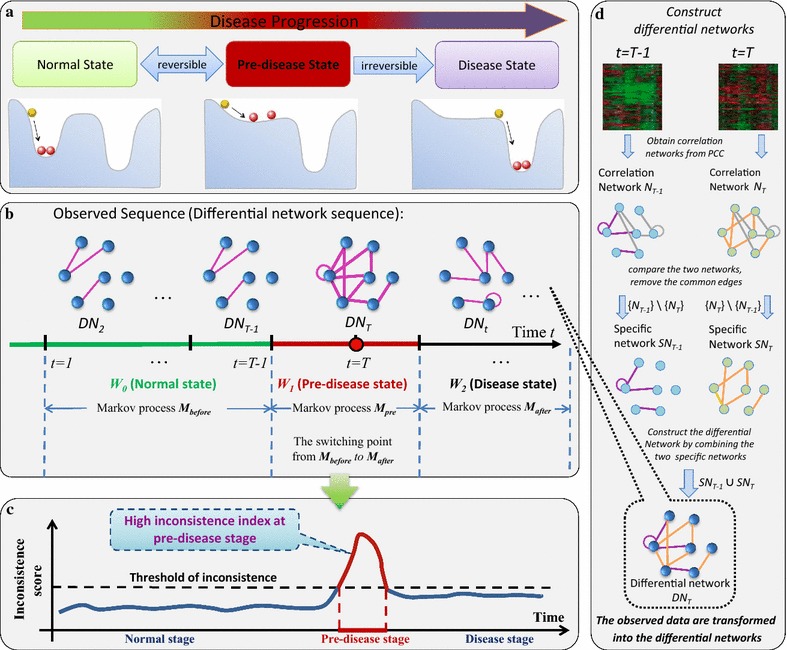Fig. 1.

Outline for identifying the pre-disease state by using the differential-network-based HMM. a Disease progression can be divided into three states, i.e., the normal state with high resilience, the pre-disease state with low resilience, and the disease state with possible high resilience. b First, we constructed the differential network sequence O T − 1 = {DN 2, DN 3, …, DN T − 1} based on the observed molecular data. Then, we trained the HMM representing the normal state, which, in view of stable dynamics, was modelled as the stationary Markov process M before, while on the other hand, the pre-disease state was defined as a Markov process M pre. Thus, based on the dynamical difference of the two Markov processes, detecting the pre-disease state during the disease progression is equivalent to identifying the switching point between these two distinct Markov processes. Second, for each candidate time point, we calculated the probability P of being the switching point based on the HMM . c The abrupt increase of P indicated that a candidate point t = T was the switching point of with high probability. d The differential network was obtained based on three steps at each time point or period. We first constructed the correlation network at each time point. Comparing the correlation networks from adjacent time points, this generated a specific network, which included the specific edges for each time point. Then it followed the differential network by combining the specific networks from adjacent time points
